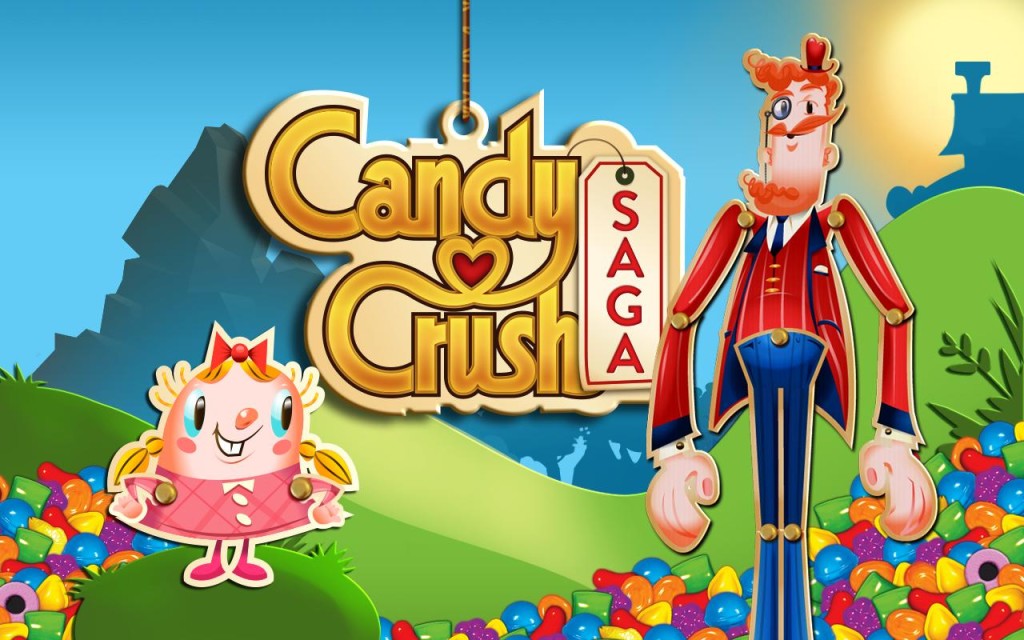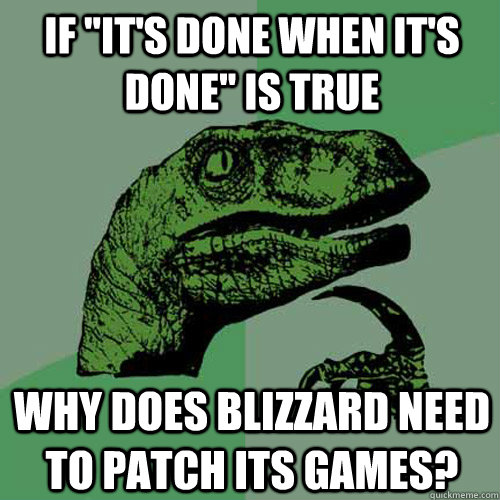Last updated on March 27, 2015
Read the First Four Parts! And Here is Part 4!
It seems, at least from the outsider’s perspective, that the “nice guys finish last” when it comes to business – those which treat customers as consumers should win the day, right? Yet, there’s plenty of contrary examples that shoot down such a notion, and it doesn’t necessarily have to be the case. Depending on your potential target market, ethical practices could prove a huge advantage in one market or another – your various publics matter. As well, you need to identify the correct kind of cultural marketing necessary to appeal to your main audience. Blizzard Entertainment seems to know this better than anyone.
Video game companies must take advantage of social media and marketing by trade. Internet cultures grow around various media properties, from comic books to video games; that especially goes for the latter, as massively multiplayer online roleplaying games develop their own social mores and codes of conduct. I play World of WarCraft (made by Blizzard) myself, and there’s a distinctive difference between the players of the two factions at war in that game and their social interaction on the Internet.
As such, it’s a wonder with all the free to play games and subscription fees that Blizzard continues operating with a sterling reputation not befitting a multi-billion dollar company. My experience and research have led me to conclude that video gamers HATE spending more money than they need to spend. They will wait for massive sales on PC games, and they will complain about downloadable content, post-release content which companies release to either extend the game’s lifespan (from the company’s perspective). Most gamers also hate the way recent trends in mobile gaming and supposed “free-to-play” games have gone, going as far as to call them unfair, “pay to win” travesties of the highest order (the Internet can be quite hyperbolic about such things, but the general sentiment stands). The business model of “freemium”, a pricing strategy by which a product or service is provided free, but charges money for proprietary features, functionality, or virtual goods, is seen as extremely distasteful.
Just imagine the last time you played Angry Birds or Candy Crush Saga – both of those operate on the same model, and gaming hobbyists detest such things. They believe them to be manipulative, psychologically prodding people’s minds to purchase items and help to surpass intentionally unsurvivable obstacles, rather than through actual challenge. In fact, the entire mobile gaming market is flooded with such products.

However, a few companies have managed to supersede the problems of perception in the freemium model via creating superior customer value. Blizzard Entertainment, for their part, has been a stalwart in the PC gaming industry for over twenty years; that twenty years of oft-delayed games, massively polished and brimming with replayability and value, has kept Blizzard’s reputation high and their profits high as well! Their community focus has led them, for the most part, to eschew traditional retail models and interact almost solely with the fans of their games – online, offline at their convention Blizzcon, or at other player-focused conventions like Penny Arcade Expo (also known as PAX). Interestingly, they released a free-to-play digital card game called Hearthstone, and yet the reception to its freemium pricing model has been incredibly positive. Why is this?
Clearly, we can tell they did a ton of research as to what causes people to commit to in-game purchases.
First of all, Blizzard amassed huge amounts of data through expansive alpha and beta tests of the game. Even before the game was released, thousands of players were trying the game out, and Blizzard could make balance changes accordingly to see how player reacted to the card pricing model. This staggered release schedule whetted appetites for the game, as well as allowing Blizzard to craft the game according to their ethos of excellent, fair game design (most of their prior games are competitive games, so it’s no surprise they would take the time to do this).
A huge community of streamers and Youtubers who were given early access showcased the game via their various Internet channels. Because of Hearthstone’s slow turn-based pace, live streamed gamers could talk through their moves, engage with viewers, and in general promote Hearthstone just out of general love for the product. Blizzard placed no restrictions on the streaming and use of its games on video services (unlike other companies in the video game space which require a partnership deal with a sponsor or monetary compensation – Nintendo, you are so dumb in this space), and this allowed Hearthstone’s popularity to fester and disseminate across the Internet. Many of the streamers themselves were engaging personalities who entertained audiences. The fact that you could play it for free, even after the staggered beta tests, certainly didn’t discourage people from trying it out!
This is what Blizzard does: they provide the community tools to invest in their brands, and they freely let the customers play their games. They can even offer criticism on Blizzard’s official forums, which are a hodgepodge of praise, angry venting, and legitimate criticism. Blizzard’s community managers eagerly respond to comments and explain (or affirm) design choices, and this continual engagement lets players feel like their purchase matters. Blizzard adopted grassroots, social media-based marketing much more quickly than their competitors, and this has helped them to succeed in a now Internet-focused business like video games. Nobody seems to think they’re a bad company, and they have never been accused of unethical business practices; rather, mostly people complain about how long their games take to make, if anything!

As well, they seemed to have made sure the game would remain fair and balanced for players who spend money, and those who do not. This “fairness” element underlines all the rest of the marketing, since such elements are integral in video game marketing. Let me explain.
Firstly, Hearthstone is a card game where you arrange 30 cards, 2 of each individual card maximum, into a deck. Most card games require 60 cards, so this is a nice change from a value perspective. Second, the game itself is purely competitive even with the most basic cards. As several professional Hearthstone players have proved, you can reach Legend rank (the equivalent of the top of the ranking ladder) with just the basic cards the game gives you for free. Not having the best cards will put you at a disadvantage, but superior play will always wins the day in the vast majority of cases.
Lastly, you never technically have to spend money to obtain gold; Hearthstone provides avenues for players without the money to spend in the form of “daily quests”, which require you to fulfill certain in-game conditions in exchange for gold. Gold can be used to purchase new cards completely for free, as long as you put the work into finishing those tasks. Yes, it will take longer, but many players have never spent a dime and have amassed great success in the game. Lastly, customers can “disenchant” cards to create other cards they desire; even if you have more than 2 of the card, it doesn’t uselessly sit in your collection. There’s nothing in Hearthstone that does not provide value to the customer in some sense. You are never “losing out” (except in losing at the game, that is!).
Of course, these shell elements wrap around a very compelling and rewarding game, which players find provides enough value to actually play continually or just outright buy many, many cards to enhance their experience faster. The key is, the game itself remains the same, even if the resources available to players differs. They can choose whether or not to purchase new cards with real money, and still enjoy the game.

In this case, I think we can say Blizzard took a negatively-perceived model and given it slight tweaks which worked brilliantly. Their customer-focus has allowed them to make product people want to play. Their good game design just supplements the rest of their stellar reputation and excellent methodologies. They made “freemium” into something the more narrow “hardcore” gaming market could enjoy, and that’s quite an accomplishment. I don’t think people would have bought into it if Blizzard wasn’t seen as a “good” company in contrast to perceived “bad” companies that use freemium models poorly and have a bad reputation for screwing the customer (even if it’s mostly perception). Electronic Arts and Ubisoft are often seen as “big business” and Blizzard as a “community focused company”, even though both rake in billions of dollars a year – clearly, there’s a selling focus at the other two companies.
As for myself, I have been compulsively playing Blizzard games since 2005, so trust me when I say this company has been part of my life for a while. I pay a monthly subscription fee of $14.99 to them, and I still feel like I get value out of World of WarCraft as they have added content continually for years (seriously, the game’s been out a decade – that is a LOT of stuff). That I also got my immediate family hooked on the game probably doesn’t help matters, as well as the friends I’ve made and continued to contact just from the game. I initially played Hearthstone because playing Hearthstone actually gives a reward in World of WarCraft; that cross-brand promotion (another Blizzard hallmark) led me to play Hearthstone, and I’ve been playing it quite a bit since then! Blizzard’s pricing models provide continual value and great game mechanics for the customer, and that’s what keeps people playing long after the initial high.
Your own opinions on Blizzard’s models might vary, but a lot of people feel satisfied, even delighted, at what they get when they pay Blizzard. That, I think, cannot be denied, even if superior games exist on the market. Branding is still important.
